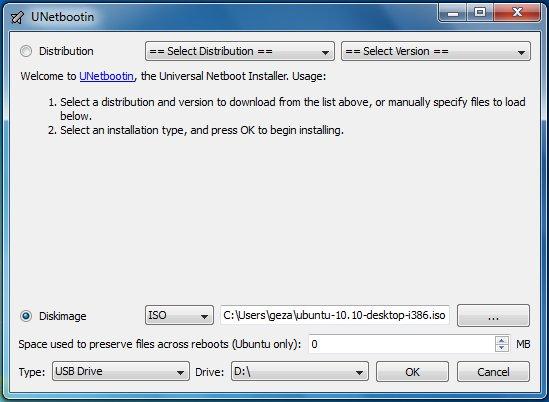
- #LINUX USB INSTALL WITH BOOT FOR MAC HOW TO#
- #LINUX USB INSTALL WITH BOOT FOR MAC MAC OS X#
- #LINUX USB INSTALL WITH BOOT FOR MAC PRO#
- #LINUX USB INSTALL WITH BOOT FOR MAC SOFTWARE#
Partition with a 100 MB boot partition, and then a root partition on a
#LINUX USB INSTALL WITH BOOT FOR MAC MAC OS X#
I created a small 25MB partition as the first partition, formated itĪs Mac OS X Journaled and installed rEFIt to it, then followed that
#LINUX USB INSTALL WITH BOOT FOR MAC PRO#
It works! Can now boot Linux on an unmodified MacBook Pro (5,2) fromĪ single USB stick (or external hard drive). I'm going to try with a recent macbook and linux isoįrom Boot Linux from USB on MacBook Pro 17″ : In one case I had a "Windows" icon but it then failed to boot with a message like "no system found"Įdit: This is a rather old question, I haven't tried for a while, maybe today it is just a matter of running dd to copy the iso, but it did not work 5 years ago. I need to precise that I holded the "alt" key while booting the mac and the only visible bootable disk was the hard disk.
#LINUX USB INSTALL WITH BOOT FOR MAC SOFTWARE#
While all steps were successfull and in some cases I could even boot on a PC, the step of booting on Macintel software failed (on a macbook).
#LINUX USB INSTALL WITH BOOT FOR MAC HOW TO#
I'm desperately trying to find a good tutorial which explains how to create such a key. I have read that MAC's EFI can only boot GPT GUID formatted disks. All traces of Linux should now be erased.I'm trying to create a bootable USB key with Linux (debian) and that can be booted on Macintel hardware. It will boot from its hard drive, starting Once a Command Prompt window is open, type the following command and press Enter On the Choose an option screen, click the Troubleshoot icon.Ĭlick the Advanced options tile, and then click the Command Prompt tile. These instructions to access the recovery Command Prompt with a Windows 7 disc.Ĭlick the Repair your computer option after booting from the disc. Instructions and screenshots here are for Windows 8, but you can follow

You’ll need to access the Command Prompt from the disc. Insert the Windows installer or recovery disc into your computer and restart Follow our instructions to createĪ system repair disc in Windows 8 or create Windows repair disc and use that instead. If you don’t have a Windows installer disc lying around, you can create a We’ll need to use a Windows installer disc to overwrite the Linux boot loader Linux has now been removed from your computer, but its boot loader persists. Your current Windows partition, if you like. You can also choose to create a new, separate partition instead of expanding Remain unusable until you assign it to a partition. Right-click it, and select Extend Volume. Next, locate the Windows partition near the newly available free space, While Windows partitions will be identified by their “NTFS” file system.īe careful while deleting partitions here – you wouldn’t want to accidentallyĭelete a partition with important files on it. The Linux partitions because they have no label under the “File System” column, Locate the Linux partitions, right-click them, and delete them. The Start menu or at the Start screen, and then press Enter to launch the The Start menu or Start screen, type diskmgmt.msc into The partitions, the GRUB boot loader won’t boot your computer properly.įirst, you’ll need to delete the Linux partitions. Windows boot loader with its own boot loader, known as “GRUB.” After deleting Will also have to restore the Windows boot loader, as Linux overwrites the Then expanding your Windows partitions to use the now-free hard disk space.
/dual-boot-linux-and-mac-os-4125733-0fb887c8f62d44c4a1f69a700e2e600b.png)
Uninstalling it requires removing the Linux partitions from your computer and

If you’ve installed Linux on its own partitions in a dual-boot configuration, If You Installed Linux on Its Own Partition Note that this entry will only be available if you installed Ubuntu inside Ubuntu files and boot loader entry from your computer. You would any other program and the uninstaller will automatically remove the Panel, and locate Ubuntu in the list of installed programs. If you installed Ubuntu or a similar Linux


 0 kommentar(er)
0 kommentar(er)
